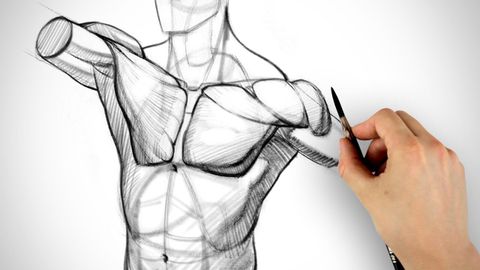
Subtitles & vocabulary
How to Draw Pecs - Form
00
vulvul posted on 2015/09/27Save
Video vocabulary
arm
US /ɑrm/
・
UK /ɑ:m/
- Transitive Verb
- To activate a weapon or bomb for use
- To give a gun or other weapon to a person or group
- Noun (Countable/Uncountable)
- Part of your body from your shoulder to your hand
- A branch of another object e.g. company
A1
More draw
US /drɔ/
・
UK /drɔ:/
- Transitive Verb
- To attract attention to someone or something
- To influence a person's involvement in something
- Noun (Countable/Uncountable)
- Something that attracts people to visit a place
- A lottery or prize
A1TOEIC
More plane
US /plen/
・
UK /pleɪn/
- Countable Noun
- An airplane
- Sharp tool for smoothing or shaving wood
- Noun
- Flat or level surface
A1TOEIC
More bottom
US /ˈbɑtəm/
・
UK /'bɒtəm/
- Noun
- The part of your body you sit on
- Lowest position, often in a company or contest
- Verb (Transitive/Intransitive)
- To hit the lowest part of something
- To provide with a bottom.
A2TOEIC
More Use Energy
Unlock All Vocabulary
Unlock pronunciation, explanations, and filters
